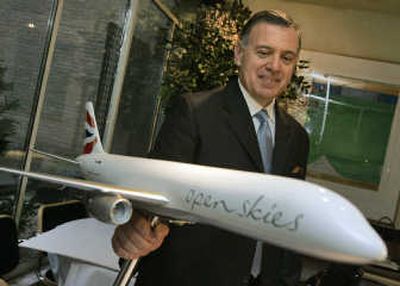More Trans-Atlantic routes added

NEW YORK – Starting this weekend, travelers on both sides of the Atlantic will find they have more options when booking nonstop flights between the U.S. and Europe.
They could fly between New York, and Lyon, France, or find a new flight from Salt Lake City to Paris.
What they won’t find much of when the open skies agreement between the U.S. and European Union kicks in on Sunday are lower fares, despite a handful of introductory sales.
That’s because airlines already struggling with sky-high fuel prices and an economic slowdown see open skies’ relaxed route restrictions primarily as a way to attract more of the high-end business and affluent leisure travelers they covet and see as necessary to their financial survival. British Airways, for instance, is launching a new trans-Atlantic airline to take advantage of the agreement – aptly named OpenSkies – but will offer only 30 economy-class seats on each 82-seat plane, with the rest evenly split between first and business class.
“There is a move afoot … to use smaller (airplanes) flown nonstop to push leisure customers by the wayside … except for those willing to pay far higher prices,” said Robert Mann, an independent airline consultant in Port Washington, N.Y.
As oil has pushed past $100 a barrel, propelling jet fuel prices to record levels, many carriers have cut domestic capacity and moved planes to international routes, where ticket prices – and profits – are higher. The open skies agreement appears likely to hasten the shift.
While the number of overall flights may increase and some cities will get new service and routes, the vast majority of the new flights will be on the same well-trafficked routes.
There will be some instances where flights shifted from existing routes to new ones to Europe may push fares lower in the short term. But that will be balanced by fewer flights and less competition on other routes, Mann said. Still, popular destinations like London could see more competition, and some lower fares.
The open skies agreement was inked last May to end rules under which U.S. and European governments had to negotiate airlines’ access to new markets, often on a city-by-city basis. Open skies may offer travelers more in the way of convenience than savings, but it is likely to help the airlines’ bottom lines. Carriers say open skies’ biggest benefit is giving them the freedom to quickly make changes to their flight schedules. Many airlines will also launch new code-sharing agreements – which let them book passengers on one another’s planes.